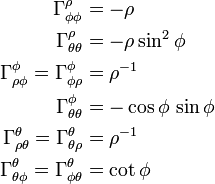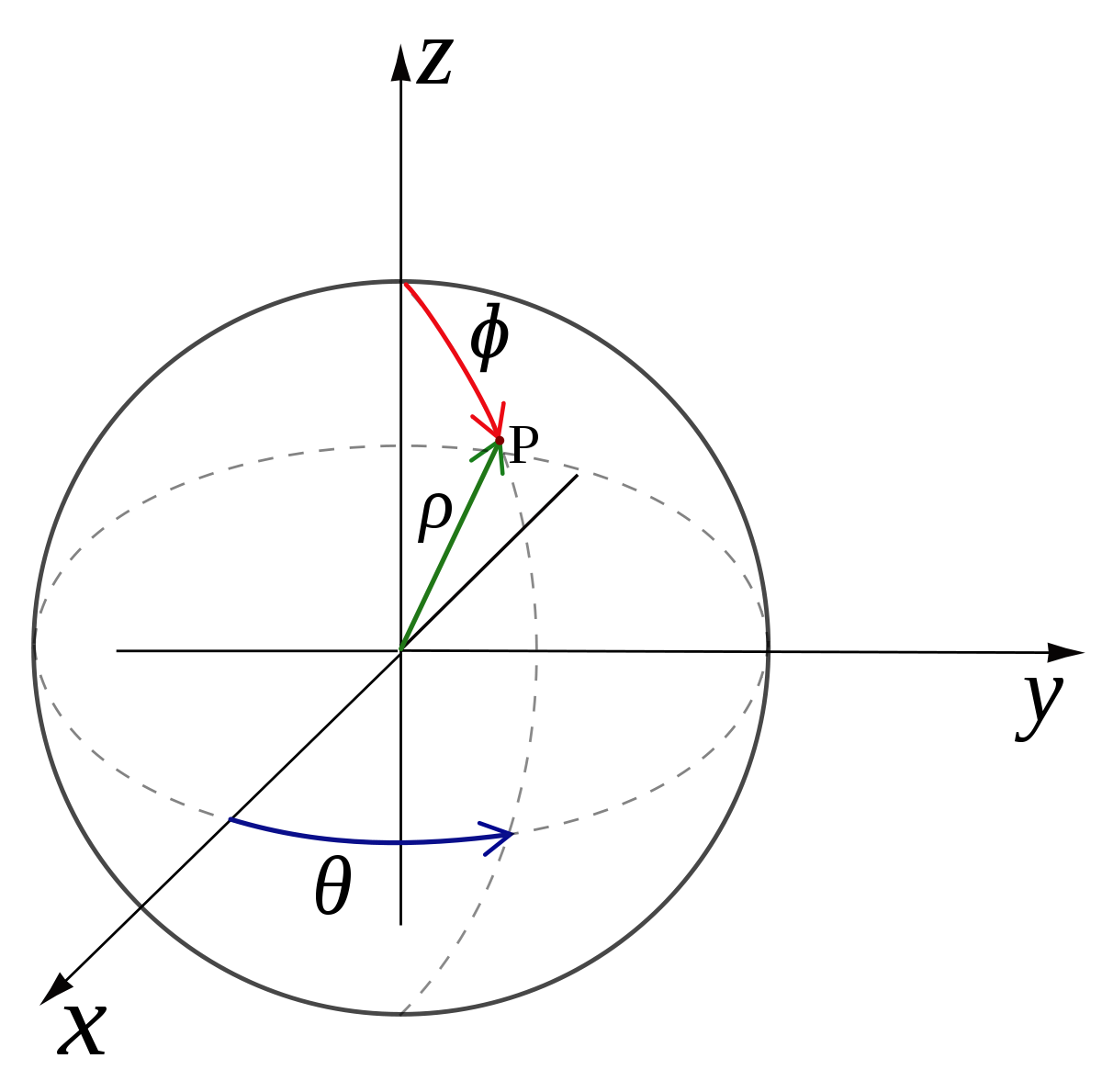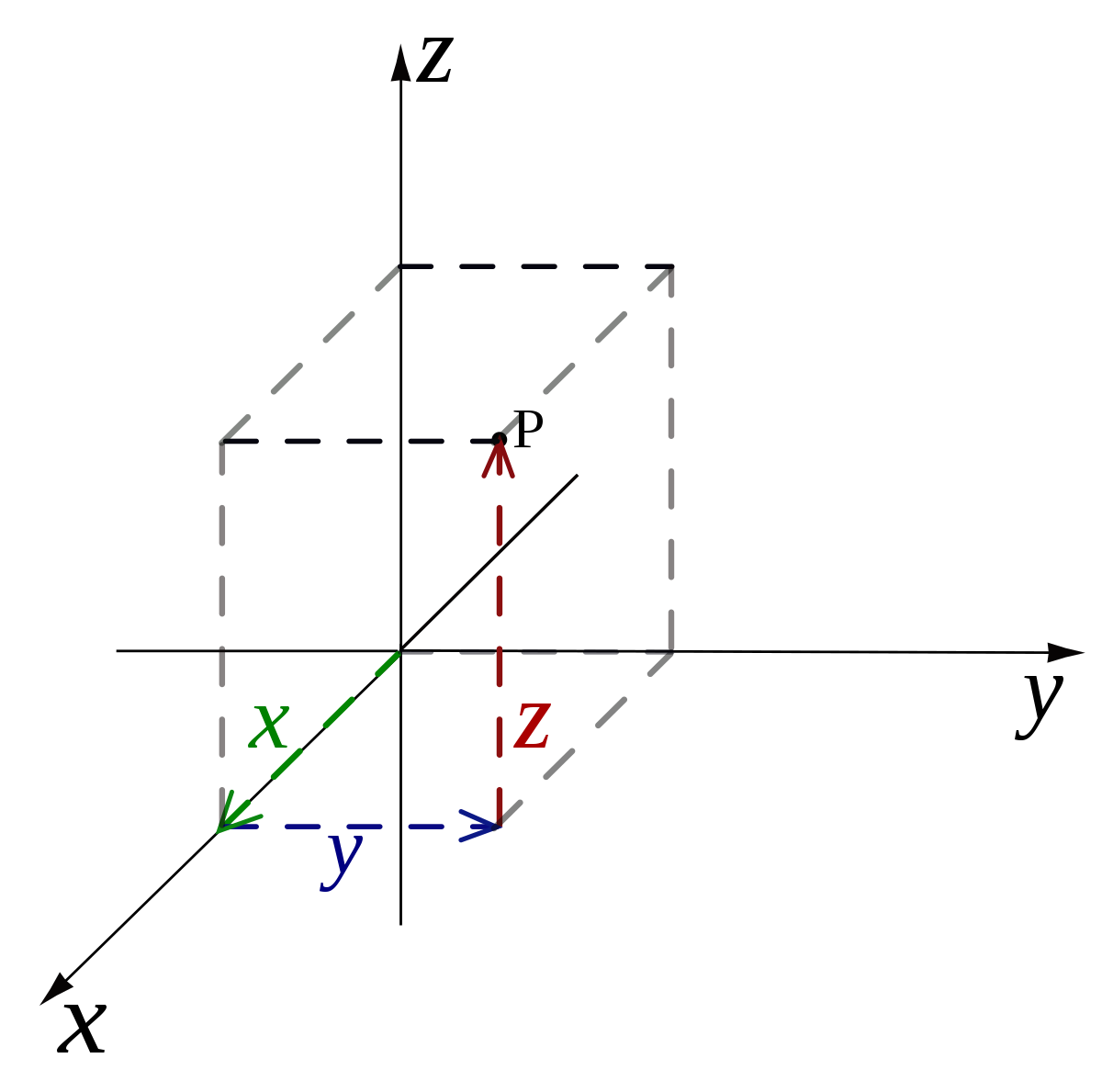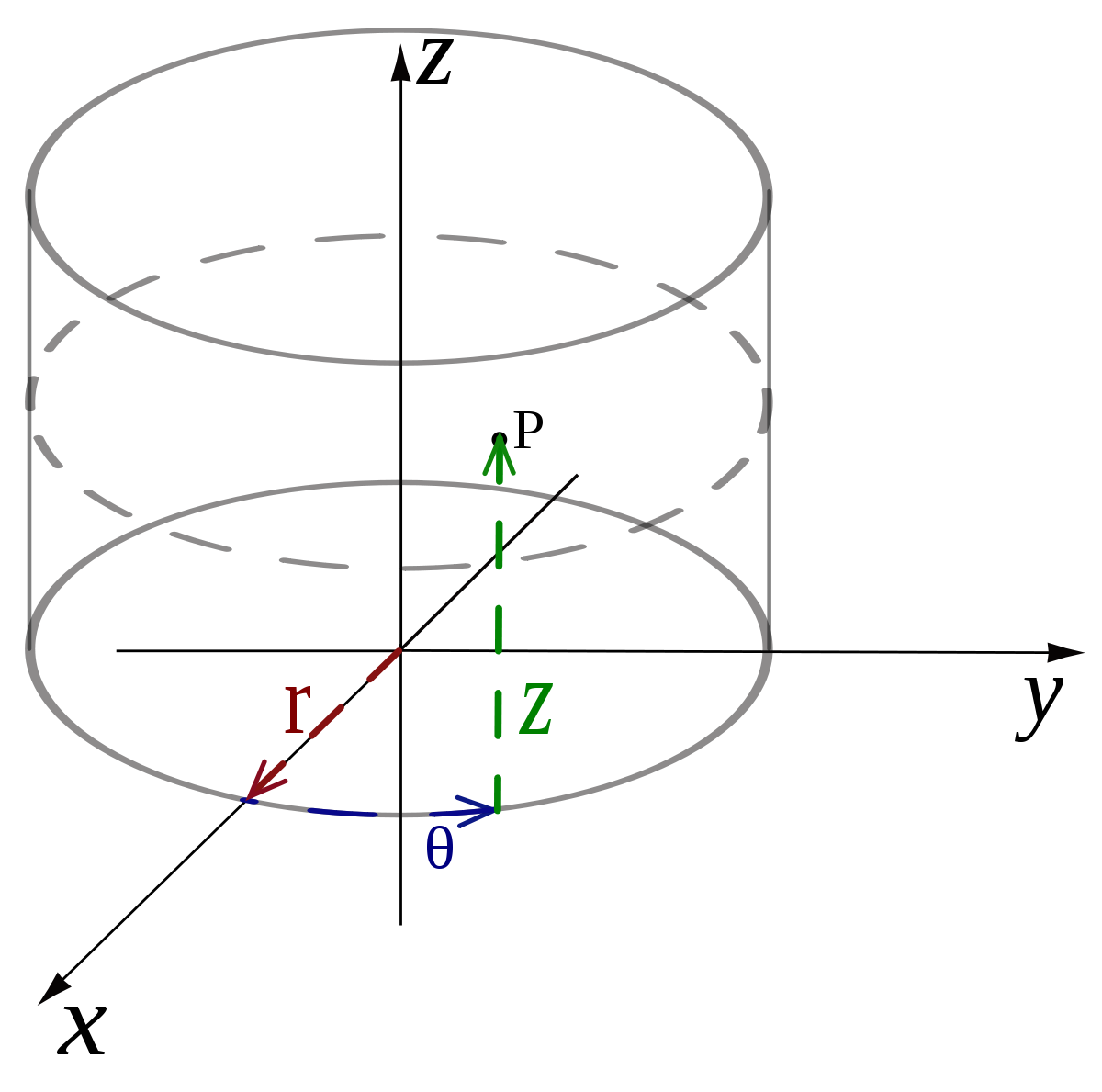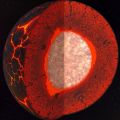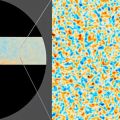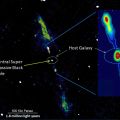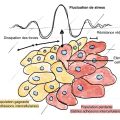Coordonnées sphériques - Définition
La liste des auteurs de cet article est disponible ici.
Généralisation
Soit un espace vectoriel normé de dimension n finie. Pour un point x de cet espace, de coordonnées (x, …, x), on définit les coordonnées sphériques (r, ϕ, …, ϕ) par
Les coordonnées sphériques constituent le cas particulier n = 3 et les polaires n = 2 ; on pourra consulter la section correspondante de l'article 3-sphère pour le cas n=4.
Propriétés
Propriétés différentielles
Différentielles
Le volume infinitésimal s'écrit
et la surface à ρ constant est

Les vecteurs de la base comobile

Cinématique
Les quantités cinématiques, position, vitesse et accélération s'en déduisent :
Opérateurs différentiels
L'opérateur nabla, servant au calcul du gradient, de la divergence et du rotationnel s'écrit
Le laplacien s'en déduit :
Tenseurs usuels
Le tenseur métrique s'écrit
et l'intervalle
Les éléments non nuls du symbole de Christoffel sont
Relation avec les autres systèmes de coordonnées usuels
Les coordonnées cartésiennes (x, y, z), cylindriques (r, θ′, z) et sphériques, lorsqu'elles sont définies par rapport au même repère cartésien (O, x, y, z) suivent les lois de transformations données ci-dessous.
| Système de coordonnées | Depuis les coordonnées sphériques | Vers les coordonnées sphériques |
|---|---|---|
| Coordonnées cartésiennes |

|
![\begin{align} \rho &= \sqrt{x^2+y^2+z^2},\\ \phi &= \arccos(z/\rho)\\ \theta &= \begin{cases}\arccos\frac{x}{\sqrt{x^2+y^2}} & \mathrm{si}\ y\geq0, \\[,5em] 2\pi-\arccos\frac x{\sqrt{x^2+y^2}} & \mathrm{si}\ y < 0;\end{cases} \end{align}](https://static.techno-science.net/illustration/Definitions/autres/2/2a877759cfcefa51cfe439227589384b_499a777e722f1b86eb1912e6cf584381.png)
|
| Coordonnées cylindriques |

|

|
Dans le tableau ci-dessus arctan(y, x) est le prolongement classique sur les différents quadrants de arctan(y/x) pour x et y positifs.








